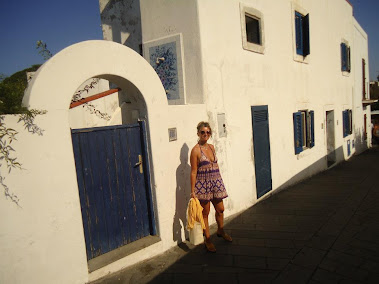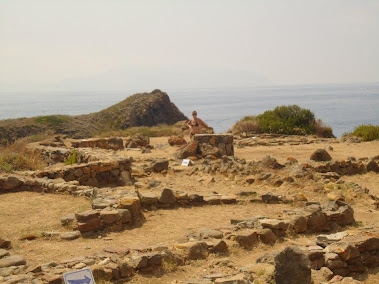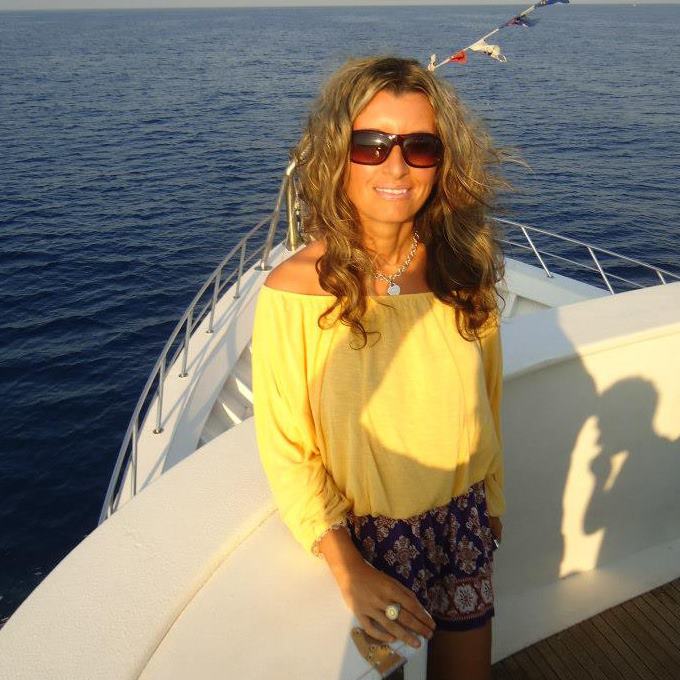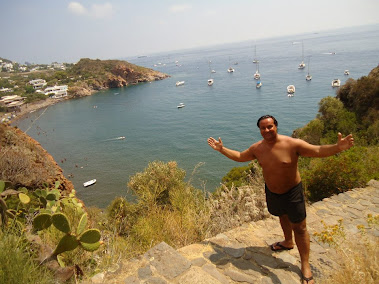The Aeolian Islands of Sicily

By Romina Monaco
While on holiday in the southern Italian region of Calabria, my husband’s relatives, who kindly accommodated us, suggested we take a brief sojourn on the Aeolian Islands of Sicily.
‘It’s not far’ explained Tony’s cousin, Francesco. ‘Why it’s only over there’, he said, casually waving his arm, pointing past the marble terrazza, over the courtyard and beyond the front gate of the Monaco family home.
Excited, I couldn’t wait to plant my feet in Sicily for the first time and relish in my newest adventure! Diana, Princess of Wales, saw her last vacation on these islands. One of the most noted, if not ominous, photos taken of her was on a diving plank of Dodi Al Fayed’s yacht which was anchored in this renowned area. I was anticipating an equally majestic experience – minus the yacht and champagne, of course.
While on holiday in the southern Italian region of Calabria, my husband’s relatives, who kindly accommodated us, suggested we take a brief sojourn on the Aeolian Islands of Sicily.
‘It’s not far’ explained Tony’s cousin, Francesco. ‘Why it’s only over there’, he said, casually waving his arm, pointing past the marble terrazza, over the courtyard and beyond the front gate of the Monaco family home.
Excited, I couldn’t wait to plant my feet in Sicily for the first time and relish in my newest adventure! Diana, Princess of Wales, saw her last vacation on these islands. One of the most noted, if not ominous, photos taken of her was on a diving plank of Dodi Al Fayed’s yacht which was anchored in this renowned area. I was anticipating an equally majestic experience – minus the yacht and champagne, of course.

Two days later Tony, Francesco, Dovilje (Francesco’s amore) and I arrived via ferry from the port of Amantea, Calabria to the Aeolian Islands. It wasn’t exactly over there as Francesco had suggested. The ferry ride took several hours and each time I believed I had spotted terra ferma it turned out to be either a mirage or just plain delirium. I wondered how Christopher Columbus had avoided mutiny all those months at sea. I was about to jump ship until finally, in the distance I saw fumes purging from a craggy mountain top. Other than the Diana photo I had never seen images of the area. I had no idea what to expect.
‘This is as surreal as the Grand Canyon! Definitely worth the 4am wake-up call…and the seasickness!’ I said to Tony as we circled the breathtaking volcanic islands of Stromboli and Panarea.
‘This is as surreal as the Grand Canyon! Definitely worth the 4am wake-up call…and the seasickness!’ I said to Tony as we circled the breathtaking volcanic islands of Stromboli and Panarea.

The eight Aeolian Islands, deemed a UNESCO World Heritage Site in 2000, are a characteristic archipelago exhibiting a symbiotic relationship between man and nature. Rare fauna can be found in this delicate ecosystem - a sea abundant in reefs accompanied by the botanical oasis of each island. It is also a harmonic coexistence of ancient cultures- an interwoven fabric that is uniquely Sicilian. Throughout the ages Greeks, Italics, Normans, Spaniards and Turks have colonized this territory. For centuries the locals have lived by land and sea, fishing the waters and harvesting the land’s luscious fruit. In the last half century the landscape has changed to include lavish yachts and luxury hotels.

Streets of Stromboli

As we docked at the port of Panarea we were quick to notice the absence of cars. Unable to travel the entire island on foot we resorted to the local taxi service. These funky little gulf carts seat six comfortably and get you from one end of the island to the other in a blink of an eye. It’s the Sicilian version of the Monaco Grand Prix – a race through a network of streets (Americans would refer to these as tiny hallways or corridors) while holding your breath and praying to the Almighty that the driver hasn’t run over a pedestrian walking just inches away! If you can peel your eyes off the oncoming road kill, the local architecture is really quite charming to behold. Remnants of a Greek culture long-gone are evident in the flat-roof, white terracotta houses. Turquoise-blue doorways and arches adorn these homes and the Spanish influence can be seen in the detailed ceramic tiles that decorate their exterior.

Now safely on the beach we chose not to forgo our footwear, fearing the tender soles of our feet would succumb to third degree burns. We hopped to the shoreline, leaving our flip flops on the lava sand and threw ourselves in the refreshing, azzure Tyrrhenian Sea.
‘What’s up there?’ Tony asked his cousin, pointing to a stone staircase etched along a nearby mountainside. Leaving the water, we slid on our protective footwear and began the treacherous climb.
It was a strenuous hike and my saturated bikini had become cumbersome. A gentle breeze blew in from the Sahara coast and the heat accompanying it was stifling. Earlier, the captain had informed us that the temperature had exceeded fifty degrees celcius…yikes!
Reaching the top a little while later, I noticed that the men had disappeared. “I think they passed out”, giggled Dovilje.
Standing on the cliff, we gazed out at the undulating blue sea and the rocky cove below. Then turning to look behind us, we saw a strange jigsaw stone formation further ahead. We had stumbled upon a three thousand year-old Mycenaean Bronze Age settlement. Both being passionate history buffs, Dovilje and I explored the stone bee-hive homes and courtyards. Only their foundations had survived, painstakingly unearthed by archaeologists.
‘What’s up there?’ Tony asked his cousin, pointing to a stone staircase etched along a nearby mountainside. Leaving the water, we slid on our protective footwear and began the treacherous climb.
It was a strenuous hike and my saturated bikini had become cumbersome. A gentle breeze blew in from the Sahara coast and the heat accompanying it was stifling. Earlier, the captain had informed us that the temperature had exceeded fifty degrees celcius…yikes!
Reaching the top a little while later, I noticed that the men had disappeared. “I think they passed out”, giggled Dovilje.
Standing on the cliff, we gazed out at the undulating blue sea and the rocky cove below. Then turning to look behind us, we saw a strange jigsaw stone formation further ahead. We had stumbled upon a three thousand year-old Mycenaean Bronze Age settlement. Both being passionate history buffs, Dovilje and I explored the stone bee-hive homes and courtyards. Only their foundations had survived, painstakingly unearthed by archaeologists.

Bronze Age settlement

After finding our partners, who were spent and scorched (both looking like sun-dried tomatoes), we boarded the ferry again. Deciding to take a break from the sun, our next maritime stop turned out to be a delightful culinary experience. On the ebony-hued Isle of Stromboli I laid my eyes on the largest Sicilian pistachio cannoli ever made. We sampled delicious local seafood and ate the most flavourful ice-cream in the world.
The visit to the Aeolie was magical. I discovered that the islands represented a connectedness between all things on planet Earth – a place where nature’s bounty is respected by all men. A place where the preservation of history is paramount and ancient cultural diversity is celebrated.

On the ferry

Tony on the cliffside of Panarea


